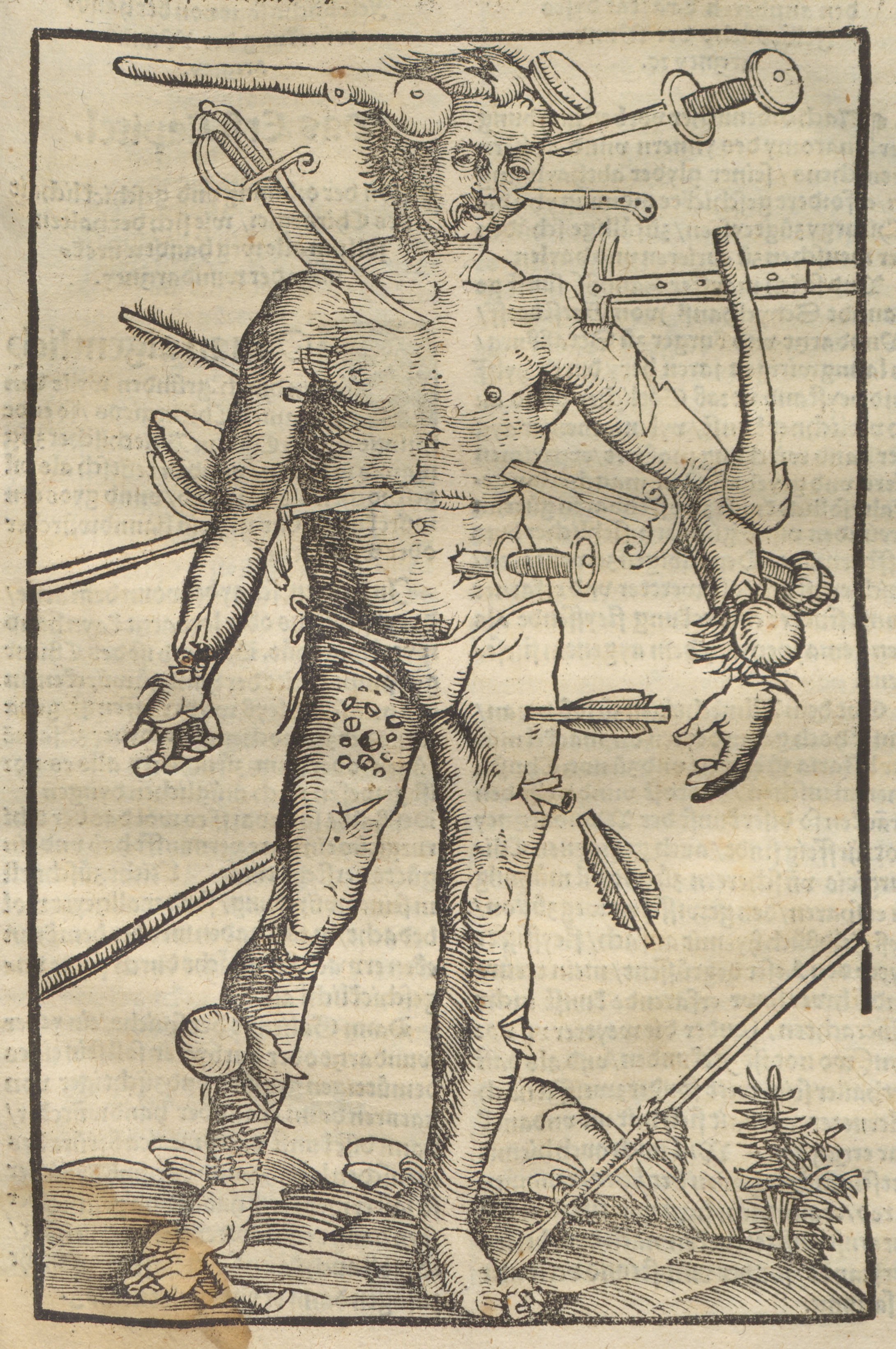Wound Man
“Wound Man” is a medieval icon representative of early medical images that were often infused with a sense of humanity. Depicting a variety of wounds and trauma, the image was not meant as a surgical diagram, but as a character—he elicits sympathy from the viewer. Standing in stoic defiance despite the trauma inflicted upon him, he exemplifies the narrative body, onto which is inscribed the harms and wounds of human existence. In an almost comical way, his pain and vulnerability is palpable, forcing viewers to imagine the experiences and calamities that he has endured. Existing in a surgical text, he is emblematic of the absurdity of our achievements: the brutality we inflict upon one another and the knowledge and skills to repair the damage. The sense of artistry and humanity that exists in early medical imaging is later removed in favor of anatomical uniformity and realism for educational and scientific purposes. However, within contemporary works of graphic medicine, the artistic aesthetic is revived through the common use of the narrative medical diagram, often personalized and expressive of the illness experience.

